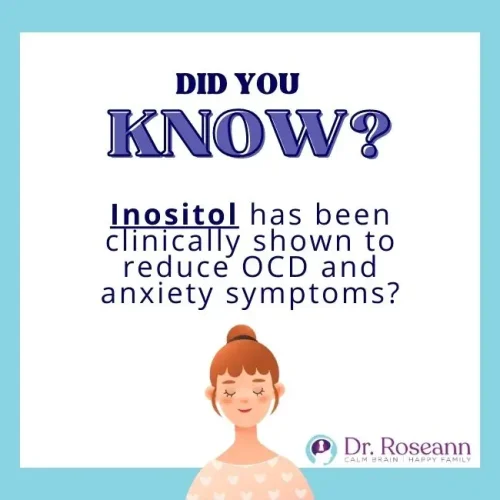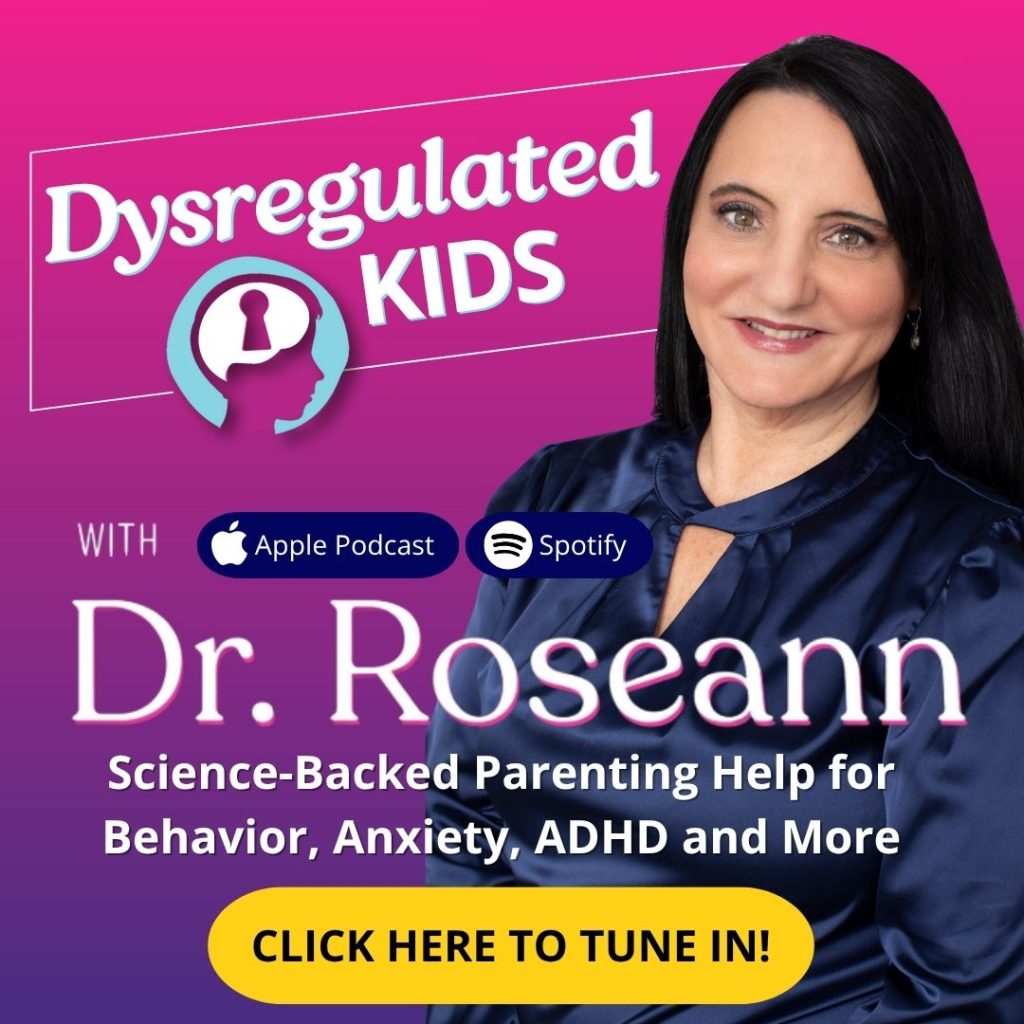Estimated reading time: 6 minutes
Many parents feel their child’s emotions ride a nonstop rollercoaster—ever notice how a tiny frustration can spiral into a meltdown that seems to come from nowhere?
Hidden brain factors such as nutrient gaps or nervous system dysregulation often sneak in quietly, driving hyperfocus bursts, repetitive habits, or sudden mood flips.
Inositol—or Vitamin B8—acts like a soft brain tune-up—helping anxious thoughts settle while focus sharpens without adding more chaos. Think of it as giving your child’s brain a gentle reset.
In this article, we’ll dive more into what inositol is and how it can change the game for your kid.
What is Vitamin B8 (Inositol) and Why Does it Matter?
Vitamin B8, or inositol, helps your child’s brain cells communicate using key messengers for mood, focus, and emotional balance (Levine et al., 1995; Einat & Belmaker, 2001; Harvey et al., 2001).
- serotonin
- dopamine
- norepinephrine
When signals wobble, even tiny gaps can spark big behavioral storms—like sparks jumping across a frayed wire.
Natural brain-boosting food sources:
🍊 Citrus fruits – sweet lift
🫘 Beans – steady energy
🌰 Nuts – quiet brain support
🌾 Whole grains – help focus stay steady
Supplements parents hear about:
- Myo-inositol – most abundant and studied
- D-chiro-inositol – less common but helpful (Minozzi, Nordio & Pajalich, 2013)
Based on research:
- Boosts serotonin → calmer moods (Levine et al., 1995)
- Enhances dopamine → sharper focus (Einat & Belmaker, 2001)
- Increases norepinephrine → alertness and attention (Einat & Belmaker, 2001)
Vitamin B8 helps brain signals flow more smoothly. When communication clears, kids often feel calmer, think more clearly, and focus better.
Even small, consistent steps toward balance can untangle the brain’s wiring and prove that calm really does come first.
Is Myo-Inositol and Inositol the Same?
Yes, myo-inositol and inositol are the same and often used interchangeably. Other forms exist too, like D-chiro-inositol and scyllo-inositol (Nordio & Proietti, 2012), each with slightly different effects on the brain.
How Does Vitamin B8 Support Mental Health?

Vitamin B8 (inositol) has been studied for decades because of its impact on serotonin pathways. Imagine it like oil in an engine—your child’s brain can run smoother and shift out of overdrive without adding extra pressure.
Research-backed benefits include:
- Research by Mukai and colleagues (2014) shows anxiety relief may calm overactive stress signals
- OCD support can ease obsessive thoughts and compulsions according to Fux et al. (1996) and Einat & Belmaker (2001)
- ADHD help improves dopamine signaling for sharper focus and impulse control as shown by Einat & Belmaker (2001)
- Mood balance supports mild depression and lowers relapse risk per Levine (1995) and El-Mallakh et al. (2016)
- Panic and agoraphobia symptoms decrease in studies by Benjamin et al. (1995)

Other intriguing findings:
- Teens with depression often have lower myo-inositol in key brain areas
- Pregnant women who supplement report better sleep (Mashayekh-Amiri et al., 2022)
- Cognitive function and quality of life in bipolar disorder improve as noted by Fux et al. (1996) and El-Mallakh et al. (2016)
- Insulin regulation and overall health may improve for women with PCOS according to Papaleo et al. (2007)
Takeaway:
Vitamin B8 helps brain signals flow with more ease. When communication improves, kids and adults often feel calmer, think clearer, and focus better.
Small, consistent steps toward nervous system balance prove that calm really does come first.
Is Vitamin B8 Safe for Children?
Safety comes first—and being cautious is smart, not failing. Inositol is gentle for most kids. Some may get mild tummy upset or loose stools at higher amounts, but side effects are rare.
Parent-friendly safety tips:
- Check with your child’s provider before starting
- Start with food sources
- beans
- citrus
- whole grains
- If supplementing, start low and go slow—small steps often make a big difference
- Choose brands tested by third parties for extra reassurance
Even small steps can help your child’s brain run smoother. Think of inositol as a gentle nudge for smoother signals—it isn’t a magic fix, yet over time it can support calm and focus.
Signs of an Inositol Deficiency
Inositol deficiency doesn’t happen often, yet it can sneak in when certain medical conditions or restrictive diets leave out inositol-rich foods.
Even small gaps can tip a nervous system that’s already on edge, showing up as:
- fatigue
- mood swings
- tingling sensations in hands and feet
Here are some common culprits parents should know:
- Antibiotics like tetracyclines
- Anticonvulsants like phenytoin or valproic acid
- Diuretics like furosemide
- SSRIs
- Lithium
- Excess alcohol use (Nordio & Proietti, 2012)
For children with PANS or Lyme Disease taking antibiotics, supplementing with inositol—around 18 grams per day—can be part of a care plan (Harvey et al., 2001). Many of my clients find this supports smoother brain signaling and helps maintain calm.
It’s not about chasing deficiencies—it’s about giving the brain the tools it needs to regulate. Always work closely with a provider to decide if inositol is right for your child.
How Much Vitamin B8 Should Kids Take?
There’s no universal “one-size” dose. Studies usually use 500 mg to 2 grams daily—but the right dose for your child should always be decided with your healthcare provider.
Start low. Go slow. Always calm the brain first for best results.
When Should Parents Consider Vitamin B8 for Their Child?
You’re not alone if you’re considering natural supports like Vitamin B8. Parents often explore inositol when:
- Their child is anxious or compulsive despite therapy
- They want natural options before—or alongside—medication
- Their child struggles with focus but stimulants cause side effects
- They’re looking to strengthen the nervous system naturally
Case example:
Michael, a dad of a 12-year-old with ADHD, noticed that even with therapy, his son still struggled with focus. With provider guidance, adding Vitamin B8 helped reduce restlessness during homework. Michael shared, “It gave us breathing room—we finally had calmer evenings.”
Takeaway:
Supplements like Vitamin B8 don’t replace therapy or meds—but they often make everything else work better. When we calm the brain first, progress follows.
How to Introduce Vitamin B8 Safely
If you’re thinking about trying Vitamin B8, here’s a simple stepwise approach parents can use:
- Talk with your child’s provider first
- Start with food sources whenever possible
- If supplementing, begin at a low dose
- Observe changes in mood, focus, or sleep
- Adjust slowly with provider input
Remember: Calm comes first. Small, consistent steps toward brain regulation can add up to big changes over time.
Parent Action Steps
FAQs
Is Vitamin B8 the same as folic acid?
No, Vitamin B8, also called inositol, is not the same as folic acid, which is Vitamin B9. They work differently in the body. Inositol mainly supports brain signaling, mood, and focus, while folic acid plays a key role in cell growth and overall development.
Can my child get enough Vitamin B8 from food?
Foods like beans, citrus, nuts, and whole grains provide Vitamin B8, but some children may need more for noticeable brain and mood support. Supplements can help fill gaps, especially when your child has higher needs due to stress, nervous system dysregulation, or certain medical conditions.
Are there risks or side effects?
Vitamin B8 is generally gentle and well-tolerated. Some kids may notice mild stomach upset or loose stools at higher doses. Starting low, going slow, and checking with your child’s healthcare provider ensures safe use while supporting smoother brain signaling and calmer moods.
Citations
Einat, H., & Belmaker, R. H. (2001). The effects of inositol treatment in animal models of psychiatric disorders. Journal of affective disorders, 62(1-2), 113–121. https://doi.org/10.1016/s0165-0327(00)00355-4
Fux, M., Levine, J., Aviv, A., & Belmaker, R. H. (1996). Inositol treatment of obsessive-compulsive disorder. The American journal of psychiatry, 153(9), 1219–1221. https://doi.org/10.1176/ajp.153.9.1219
Harvey, B. H., Scheepers, A., Brand, L., & Stein, D. J. (2001). Chronic inositol increases striatal D(2) receptors but does not modify dexamphetamine-induced motor behavior. Relevance to obsessive-compulsive disorder. Pharmacology, biochemistry, and behavior, 68(2), 245–253. https://doi.org/10.1016/s0091-3057(00)00459-7
Levine, J., Barak, Y., Gonzalves, M., Szor, H., Elizur, A., Kofman, O., & Belmaker, R. H. (1995). Double-blind, controlled trial of inositol treatment of depression. The American journal of psychiatry, 152(5), 792–794. https://doi.org/10.1176/ajp.152.5.792
Levine, J., Barak, Y., Kofman, O., & Belmaker, R. H. (1995). Follow-up and relapse analysis of an inositol study of depression. The Israel journal of psychiatry and related sciences, 32(1), 14–21.
Mashayekh-Amiri, S., Delavar, M. A., Bakouei, F., Faramarzi, M., & Esmaeilzadeh, S. (2022). The impact of myo-inositol supplementation on sleep quality in pregnant women: a randomized, double-blind, placebo-controlled study. The journal of maternal-fetal & neonatal medicine : the official journal of the European Association of Perinatal Medicine, the Federation of Asia and Oceania Perinatal Societies, the International Society of Perinatal Obstetricians, 35(18), 3415–3423. https://doi.org/10.1080/14767058.2020.1818225
Mukai, T., Kishi, T., Matsuda, Y., & Iwata, N. (2014). A meta-analysis of inositol for depression and anxiety disorders. Human psychopharmacology, 29(1), 55–63. https://doi.org/10.1002/hup.2369
Minozzi, M., Nordio, M., & Pajalich, R. (2013). The Combined therapy myo-inositol plus D-Chiro-inositol, in a physiological ratio, reduces the cardiovascular risk by improving the lipid profile in PCOS patients. European review for medical and pharmacological sciences, 17(4), 537–540.
Nordio, M., & Proietti, E. (2012). The combined therapy with myo-inositol and D-chiro-inositol reduces the risk of metabolic disease in PCOS overweight patients compared to myo-inositol supplementation alone. European review for medical and pharmacological sciences, 16(5), 575–581.
Papaleo, E., Unfer, V., Baillargeon, J. P., De Santis, L., Fusi, F., Brigante, C., Marelli, G., Cino, I., Redaelli, A., & Ferrari, A. (2007). Myo-inositol in patients with polycystic ovary syndrome: a novel method for ovulation induction. Gynecological endocrinology : the official journal of the International Society of Gynecological Endocrinology, 23(12), 700–703. https://doi.org/10.1080/09513590701672405
Always remember… “Calm Brain, Happy Family™”
Are you looking for SOLUTIONS for your struggling child or teen?
Dr. Roseann and her team are all about science-backed solutions, so you are in the right place!
Grab your complimentary copy of












